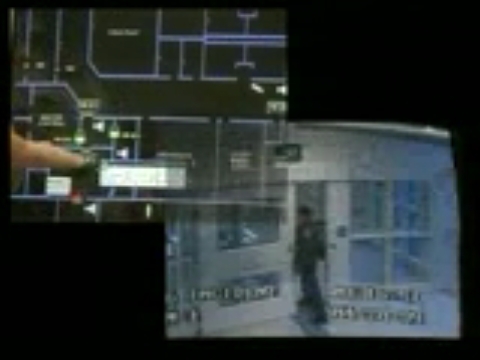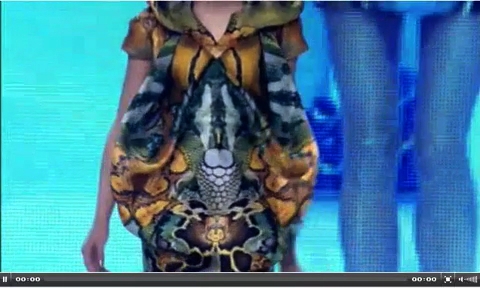Contemporary Works

Harun Farocki
(German-annexed Czechoslovakia, 1944)
"Images from the maximum-security
prison in Corcoran, California. A surveillance camera shows a
pie-shaped segment of the concrete yard where the prisoners,
dressed in shorts and mostly shirtless, are allowed to spend
half an hour a day. When one convict attacks another, those not
involved lay flat on the ground, arms over their heads. They
know that when a fight breaks out, the guard calls out a
warning and then fires rubber bullets. If the fight continues,
the guard shoots real bullets. The pictures are silent, the
trail of gun smoke drifts across the picture. The camera and
the gun are right next to each other."
—Human Rights Projects (Bard
College, 2001)

I thought I was Seeing Convicts 2000
Alexander McQueen 2010
Paris Fashion Show


Future Directions in Video
David Gelernter, a professor of computer
science at Yale University
The iPad is mainly an Internet device,
and we’re still seeing the Internet the wrong way. The
ongoing proliferation of lifestreams (in the form of event
streams, feeds, RSS updates, Twitter streams and so on) makes
it clear that the Internet is mainly for telling us
what’s happening now, what just happened, what’s
about to happen and so on.
The classical Web site is static but a
lifestream flows, at the speed of time. New material arrives
constantly. Nowadays lifestreams are mainly displayed in the
form of lists.
But when Eric Freeman and I invented
lifestreams in the mid-’90s, we designed a 3D display in
which the past flowed into the depths of the screen; the future
hovered in front of the screen. The plane of the screen itself
showed you now.
This sort of display makes efficient use
of screen-space by using a foreshortened perspective view, and
by making the screen a transparent viewport you look through,
instead of an opaque surface to look at.
The iPad is designed as a traditional
opaque surface. Touch-screens will be useful for
stream-handling, but they’ll be optimized to a different
set of finger-motions.

Also of interest: 1998 article on Gelernter
Governing Lethal Behavior:
Embedding Ethics in a Hybrid
Deliberative/Reactive Robot Architecture*
Ronald C. Arkin
Mobile Robot Laboratory
College of Computing
Georgia Institute of Technology
arkin@cc.gatech.edu
Abstract
This article provides the basis,
motivation, theory, and design recommendations for the
implementation of an ethical control and
reasoning system potentially suitable for constraining
lethal actions in an autonomous robotic
system so that they fall within the bounds prescribed by
the Laws of War and Rules of Engagement.
It is based upon extensions to existing
deliberative/reactive autonomous robotic
architectures, and includes recommendations for (1)
post facto suppression of unethical
behavior, (2) behavioral design that incorporates ethical
constraints from the onset, (3) the use
of affective functions as an adaptive component in the
event of unethical action, and (4) a
mechanism in support of identifying and advising operators
regarding the ultimate responsibility for
the deployment of such a system.


grim-reaper-4-hellfire-missiles-2-sidewinder-air-to-air-missiles-and-2-gbu-12-paveway-laser-guided-bombs

